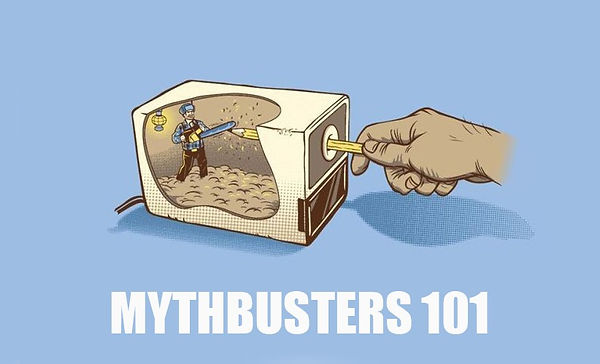
Waste to Energy Plants Myths Etc.

Myths, Innovations, Key Steps, Mistakes
& Key Performances
Five Myths About the Waste-to-Energy Industry
-
WTE is Expensive:
Not true. In the absence of subsidies—which can distort the economics of any public-private project—WTE can be the least expensive strategy, especially when compared to disposing of waste in a secure sanitary landfill and the cost of generating power through more-traditional means. Proper design and the use of industry best practices and modern high-energy efficient designs make WTE competitive with most other waste-treatment options.
-
WTE Technology Options are Costly and Limited:
Not true. Large, high-priced international firms are not the only, or even the most efficient, option available.
-
WTE Emissions are High:
Not true. Modern WTE projects generate fewer emissions than typical conventional fuel power plants, and they eliminate a large portion of the ozone-depleting methane generated by landfills. The flue gas treatment in modern WTE projects removes more than 99 percent of dioxins, 96 percent of particulate matters, and 94 percent of HCL.
-
WTE Contributes to Climate Change:
Not true. Life-cycle studies show that WTE reduces greenhouse gases by one ton of carbon dioxide equivalents for every ton of trash processed. Methane emissions that would have been generated in a landfill are avoided when the solid waste is used in a WTE facility. Methane is a potent greenhouse gas, 25 times more potent than carbon dioxide.
-
WTE Creates Large Amounts of Residue:
Not true. WTE reduces overall trash volume by about 90 percent, resulting in a commensurate decrease in the land required for garbage disposal. Some ash from a WTE facility can be used in construction material, such as in road bases, reducing the need to extract and transport other materials. A tiny fraction—3 percent—of incoming waste volume remains after combustion and processing for landfill disposal.
Five Recent Innovations in the Waste-to-Energy Industry
-
Improvements in industry best practices:
-
Optimizing plant design to avoid under-performing plant systems and equipment. Modern WTE projects are not only more energy efficient, but they are also more profitable because the industry has developed more cost-effective technologies as multiple generations of WTE projects have been implemented around the world.
-
Plant owners and regulators are seeking less-costly options in plant design and services, breaking from the traditional approach of relying on a handful of preferred large international WTE companies, helping to discourage monopolies, with their related impact on capital expenditures and annual operations and maintenance expenses.
-
China is becoming a player in promoting more cost-effective WTE plants. Modern Chinese WTE technology, from both a quality and cost perspective, can be extremely competitive with the industry’s leading OEM and engineering, procurement and construction contractors.
-
Access to a greater number of WTE technology options, Large, high-priced international firms are not the only, or even the most efficient, option available.
-
Financing of a properly structured WTE project is increasingly straightforward. Now that WTE projects are more mainstream, investors have access to solid data to estimate a project’s operating costs and revenue stream, using long-term municipal solid waste supply and power purchase agreements.
-
Two of the biggest unknowns—projected revenue and projected expenses—can now be forecast with reasonable certainty, reducing risk and financing costs. Subsidies, such as tax benefits, attractive financing supplied by a contractor’s host country, and the sale of carbon credits, can further reduce costs.
Five Key Steps to a Successful Waste-to-Energy Project
-
Commission an effective feasibility study that addresses key project parameters, such as waste characterization. Establish realistic estimates of alternative waste disposal options and costs; and local area growth, waste production, and energy demands, etc.
-
Craft effective contracts between the owner, operation, and maintenance contractor, waste supplier, power purchaser, and others.
-
Develop an all-inclusive financing plan for construction and long-term operation.
-
Use the EPC contract to ensure efficient and reliable design, matching equipment selections and effective construction, commissioning, and startup programs.
-
Aim for world-class operation and maintenance performance that applies “Industry best practices” for facility management, training, outage/maintenance management, and other services. Integrate the operation and maintenance contractor into the project design and construction process to ensure that the project is developed to maximize its life-cycle returns and not simply minimize up-front capital expenditures.
Five Mistakes WTE Developers Make…and How to Avoid Them?
-
Poor feasibility study: A poor study will result in unreliable financial estimates by improperly estimating costs and/or inputs, as well revenues by developing a plant that is improperly sized, or improperly designed for the local environment
. -
Crafting a weak waste supply agreement that fails to include a ‘put or pay’ clause, fails to address ash disposal issues, and fails to adequately address inflation and regulatory changes, or has a term that is inappropriate for the project.
-
Signing a weak power purchase agreement that fails to fully account for inflation, the buyer’s creditworthiness, or impending regulatory changes.
-
Working with an inexperienced construction contractor who is unable to build the project as designed.
-
Poor plant design that improperly sizes components or relies on unproven technologies
Five Key Performance Indicators for a Waste-to-Energy Facility
-
Boiler Availability:
Unscheduled downtime caused by breakdowns and planned
-
Boiler Mass Load:
Tonnage capacity of throughput of each boiler. This indicator drive tipping revenue of a WTE Facility. Waste heating value and boiler design will affect this performance indicator.
-
Boiler Availability:
Unscheduled downtime caused by breakdowns and planned outages drive this indicator.
-
Steam Cycle Efficiency:
The efficiency of converting steam into electricity. Internal steam usage and turbine performance affect this indicator.
-
Internal electricity usage:
Electricity used for a facility’s internal needs will decrease the amount of power available for sale.




